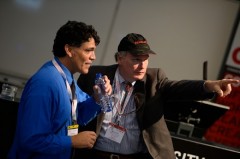Business experts speaking at COMS 2013, an annual conference that focuses on the commercialization of micro- and nanotechnologies, offered a stark reminder of the ongoing impact of the global financial crisis on scientists and engineers who want to convert their research into a business venture. Jelto Kromwijk Smit of the Dutch investment firm Prime Ventures said that venture capital funding in Europe has fallen from €8bn in 2007 to €4bn in 2012, which in practice means that most VCs are targeting their investments towards established companies with products that are almost ready for market. Banks and institutional investors have also steered away from the start-up sector as they seek to reduce risk and stabilize their balance sheets.
So far, so pessimistic. But speakers also highlighted several new ways for early-stage companies to raise some cash. Steve Walsh of the University of New Mexico identified angel investors as an increasingly significant source of seed funding, particularly in the US with the emergence of sophisticated serial investors known as “super angels” as well as groups of angel investors who pool their funds and resources. Online crowd funding is also growing – currently estimated to be worth 20% of total VC funding in the US – with a few niche services focusing on technology-based start-ups.
Within the materials sector, one proven strategy to develop a new business is to establish an R&D partnership with a customer or supplier. Large equipment makers, for example, may be keen to collaborate with a start-up firm if they can develop a technology solution with long-term commercial potential. And the reverse can reap dividends too, as shown by Intel’s decision to invest $1bn in lithography specialist ASML – with the sole aim of accelerating the introduction of next-generation chipmaking technologies.
And while most VCs are focusing their investments on established firms, a few are still putting their money into early-stage technology companies. Ray Quintana of Cottonwood Technology Fund in Albuquerque, New Mexico, believes the best approach is to identify disruptive technologies as early as possible, and then provide the support and management expertise needed to turn the initial idea into a successful business. Incubator funds linked to universities, such as Imperial Innovations in the UK and the Twente Technology Fund in the Netherlands, follow a similar ethos.
“Most of the risk in a start-up business is before the first prototype is built,” said Paul Neederkoorn of UT International Ventures, a public-private partnership between the University of Twente, local government and six private investors. “The key is being able to spot whether an invention has potential. We conduct a feasibility study to determine whether the opportunities are there, and then develop a business plan that will turn the technology into viable product.”


Pingback: MESA+ advanced materials spin-off receives EURO 1 million from Cottonwood Technology Fund to scale up ‘flexiramics’ | TMR+